Warm and dry conditions continue to affect agricultural lands in the U.S. Northern Plains and the Canadian Prairies.
Decades of drought across the U.S. Southwest has led some scientists to classify the intense, prolonged dryness as a “megadrought.” But drought in North America took a different shape in 2021, affecting areas that do not face long-term or intense drought as often. The northern Great Plains has been coping with drought for months.
According to the U.S. and Canadian drought monitors, “extreme” drought first took hold in North Dakota and Manitoba in mid-March 2021. By summer, extreme and “exceptional” drought (the worst classification) had spread to parts of Montana, Minnesota, Alberta, and Saskatchewan. Recent autumn rainfall has lessened the impact in some areas, but for the most part soils remain parched.
Drought in the northern Great Plains can affect the production of crops, as well as forage for livestock. When assessing drought and its potential to affect agriculture, scientists look at a wide range of indicators such as precipitation, temperature, evapotranspiration, and how much moisture is held in the soil.
“Earth observation data can tell us a lot about environmental conditions that impact agricultural production fairly early in the growing season, and of course throughout,” said Mary Mitkish, assistant manager for NASA Harvest, an applied sciences program advancing the use of Earth observations for agriculture and food security. “By combining satellite data with weather and other datasets, we can thoroughly monitor crop conditions and anticipate expected impacts on production.”
One of those indicators—soil moisture—is shown in the map above. Specifically, the map shows soil moisture anomalies; that is, how the water content in the top meter (3 feet) of soil from October 1-12, 2021, compared to normal conditions for the time of year. This layer of soil, called the “root zone,” is the most relevant layer for agriculture. Too little water here can prevent seed germination or stunt plant growth.
The measurements were derived from data collected by the Soil Moisture Active Passive (SMAP) mission, the first NASA satellite dedicated to measuring the water content of soils. SMAP’s radiometer can detect water in the top 5 centimeters (2 inches) of the ground. Scientists use that surface layer data in a hydrologic model to estimate how much water is present in the root zone.
The second map below shows shallow groundwater storage, as measured by the Gravity Recovery and Climate Experiment Follow On (GRACE-FO) satellites on October 11, 2021. Compared to water in the root zone, which can react relatively quickly to rainfall events, groundwater is a deeper resource and replenishes slowly. This deeper source of water is used for crop irrigation, drinking water, and can sustain streams during dry spells.
The Canadian Drought Monitor reported that by the end of September, 67 percent of Alberta was in moderate to severe drought, including 97 percent of the province’s agricultural land. Sixty-four percent of Saskatchewan and 43 percent of Manitoba were in moderate to exceptional drought, encompassing 100 percent of the agricultural land in both provinces. High temperatures and a lack of rain throughout the summer led to low yields of crops, especially wheat. Reduced feed for livestock has led some ranchers in the Canadian Prairies to cull their herds.
In the United States, drought throughout the summer also hit hard in areas growing spring wheat, which is harvested from late summer to early fall. USDA crop reports indicate that in mid-August—around the most critical time for spring wheat—crop conditions were mostly fair to very poor in the Dakotas, Montana, and Minnesota.
Soils in parts of Iowa and Wisconsin also appeared to be unusually dry. Still, in early autumn, the condition of corn crops was mostly good to fair.
It remains to be seen how the ongoing drought will affect yields of winter wheat, which is planted in autumn and harvested in spring. Entering autumn, almost half of the winter wheat crops grown in the U.S. were still facing drought.
NASA Earth Observatory images by Lauren Dauphin, using soil moisture data courtesy of JPL and the SMAP Science Team and GRACE data from the National Drought Mitigation Center. Story by Kathryn Hansen with information provided by Mary Mitkish, Keelin Haynes, and Estefania Puricelli/NASA Harvest. NASA Harvest is an applied sciences program with the mission of enabling and advancing the adoption of satellite Earth observations by public and private organizations to benefit food security, agriculture, and human and environmental resiliency in the U.S. and worldwide. This consortium of scientists and agricultural stakeholders is led by the University of Maryland.

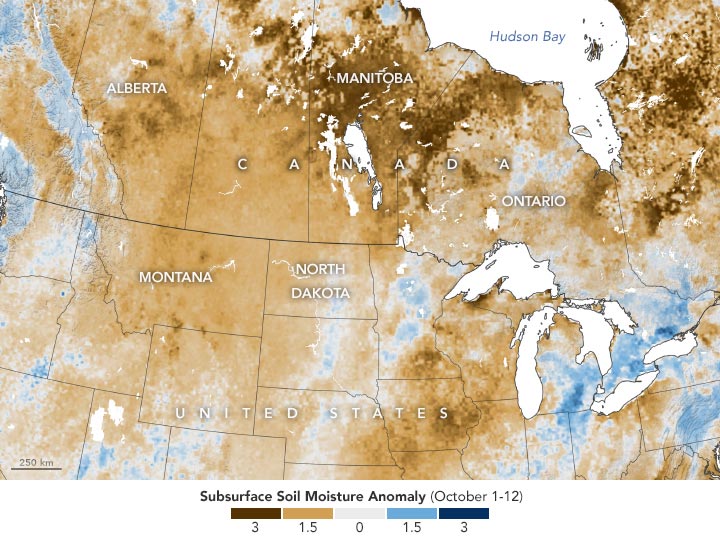
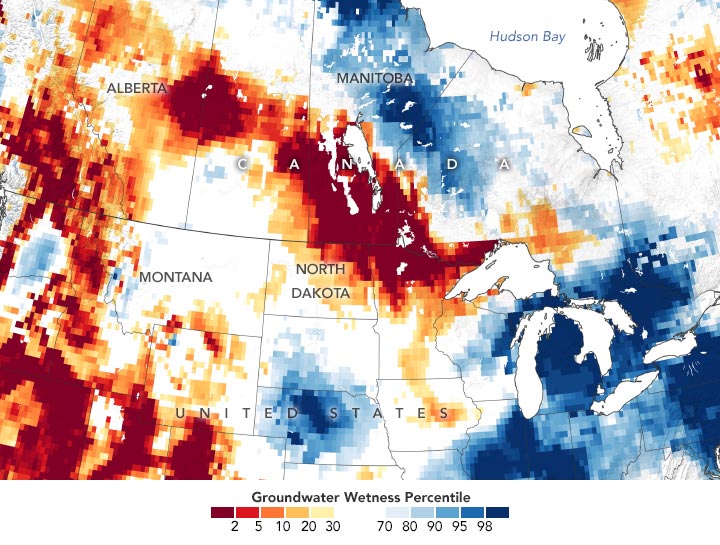


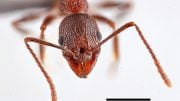

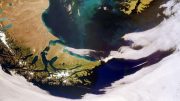
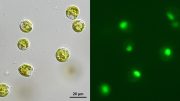


Warm and dry for harvest time? OMG that’s horrible. That’s catastrophic. Your an idiot savant with no physical world knowledge. Crawl back into your mothers basement and stop using the computer. Harvest time is sacred. If the weather is bad like you want, people starve. If the weather is good..then you cry global warming and eat your f*@king bagel thanks to good weather at harvest time. F*@king ret*rd.
Drought is subjective in that it is based on what has come to be perceived as normal for the area. If an area has had abnormally high precipitation for generations, then a return to the long-term normal will be perceived as a ‘drought.’
The area being considered in the article receives so little precipitation that farmers and ranchers have depended on pumped water from the High Plains (Ogallala) Aquifer (and others) for decades. So much so, that the drawdown is becoming a concern throughout the region!
Remote sensing provides a means for farmers and ranchers to assess the general state of growing conditions and allow them to avoid catastrophic surprises. However, if the Ogallala Aquifer becomes unusable, it will become impossible to maintain the level of agricultural activity (even in the absence of ‘drought’) that the area has become used to. It is good to think ahead, because the only thing that is constant is change.
Very interesting.
1. Water tables in the Midwest has dropped alarmingly in the last few decades for which data is available.
2. Ground water sources needs to be replenished across the North American Continent. The water tanks which dot the landscapes may be insufficient.
3.The North American continent, primarily the USA and Canada🇨🇦 have been the breadbasket of the world.
4.Population that USA and Canada have is around 335 million plus 35 million. Feeding 370 million with grains itself may be a problem in the future , as feeding grains produced to feed the cattle and meat industry, may be unsustainable agriculture in a world with a population of 7.9 billion heading towards 10 billion.
5. Other large grains producing parts of the world are increasingly becoming net Importers of Grains and other foods.
6. Agriculture and Agricultural practices needs to be reimagined.
A. It needs to be optimised globally.
1. In Dry Climate areas like Europe, sub Saharan Africa and other areas like North American continent which are more amenable to wheat production, the focus
should be on such production.
2. Where a surplus of fresh water used to be available (Canada🇨🇦?) Or other geographic regions is available Rice would be a appropriate crop.
3. In other parts of the Globe many other grains are more amenable to thriving and should be grown.
4. The current practices in agriculture of squeezing the land dry and cutting forests and using land cleared for agriculture is unsustainable.
5. Crop rotation and ensuring soil health across the Globe becomes a critical Requirement. For feeding 10 billion people.
B. All land made fallow by the horrible practices of the past needs to be brought under carrots🥕 and sticks policy globally.
C. Imports and exports of Food should be made Duty Free 🆓🆓🆓 to ensure at least One/ two decent meals for ALL human’s.
Many other suggestions like drip irrigation invented by Israel should be made Compulsory as fresh Water is increasingly Becoming a scarce resource on a Water planet with most of the planet being covered in Salt Water.
Desalination cheaply using Ultra Violet rays which has more energy than Infrared which is heating up the Climate and Seas and Oceans is another milestone to be conquered.
By the way, in major Rice Consuming nations the amount of Rice consumption can be reduced to ensure health , as Rice has energy almost three times that of wheat.
The world’s most famous atheist George Bernard Shaw was a Vegetarian. When asked why , he said I don’t want the meat consumed to float around in my stomach and get rotten. Meat takes much longer to get digested.
All diseases originate from the stomach as any sensible dietician and doctor will tell you.
Views expressed are personal and not binding on anyone.
“… Infrared which is heating up the Climate and Seas and Oceans …”
You also obviously don’t understand the physical processes that contribute to weather and climate! The absorption of electromagnetic energy of ALL wavelengths creates heat. It is the back radiation of IR from water vapor and CO2 that reduces the rate of cooling and is responsible for slight warming.
“Many other suggestions like drip irrigation invented by Israel should be made Compulsory …”
It seems that some academics consider your enthusiasm for drip irrigation to be a “zombie” that won’t die.
https://scitechdaily.com/blasting-the-zombie-out-of-water-saving-technology/
“All diseases originate from the stomach as any sensible dietician and doctor will tell you.”
And your evidence for things like skin cancer, polio, smallpox, and COVID-19 originating in the stomach is where? I don’t know whether crackpot or quack is a better description of you.
Thank God your views are not binding on anyone! I’m not comfortable with any government dictating agricultural practices. When and where drip irrigation is efficient and profitable, smart farmers will adopt the practice without it being “compulsory.” Those that don’t will not be economically competitive and go out of business.
Just how are you proposing to inexpensively produce UV for your magical desalinization plants? What do you propose to do with the salt or brine byproduct?
Something you overlooked is that for arid regions with insufficient water for agriculture, they will support grazing animals such as cows, sheep, and goats. They bring themselves to the limited water supplies. Meat still has a place in our food supply.
You lecture us on how you think the world should work, but demonstrate that you have a poor grasp of the details of reality. That is why I find the prospect of some bureaucrat taking advice from you, enforcing “compulsory” practices, quite unappealing — indeed frightening!